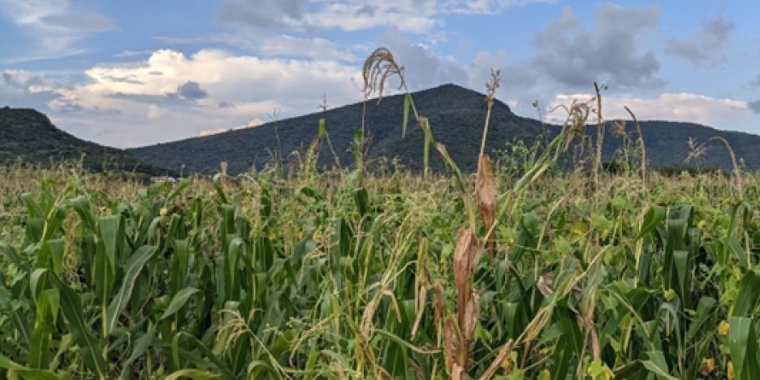| Health / Health News |
Borrowed gene helps maize adapt to high elevations, cold temperatures
Researchers at North Carolina State University have shown that an important gene in maize called HPC1 modulates chemical processes that contribute to flowering time, and has its origins in "teosinte mexicana," a precursor to modern-day corn that grows wild in the highlands of Mexico.

A teosinte mexicana plant grows on the border of a commercial cornfield. Photo: NCSU
The findings provide insights into plant evolution and trait selection, and could have implications for corn and other crops' adaptation to low temperatures.
"We are interested in understanding how the natural variation of lipids is involved in the growth and development of plants, and how these compounds may help plants adapt to their environments," said Rubén Rellán-Álvarez, a structural and molecular biochemist at NC State and the corresponding author of a paper describing the research.
"We wanted to learn more about variations in lipids called phospholipids and their role in adaptation to cold, low phosphorus, and the regulation of important processes for plant fitness and yield like flowering time."
Maize at higher altitudes, such as the highlands of Mexico, needs special accommodations to grow successfully.
The colder temperatures in these mountainous regions put maize at a disadvantage when compared with maize grown at lower elevations and higher temperatures.
"At high elevations in colder temperatures, it takes longer to make a maize plant due to lower heat unit accumulation -- corn needs to accumulate heat or growth units," Rellán-Álvarez said.
"At 10,000 feet, it takes three times longer to make a maize plant than at lower elevations."
To adapt to these special conditions, campesinos -- smallholder farmers -- must plant early in the season and plant deep in the soil; there is slow but steady growth in earlier months until the rainy season arrives.
"Over millennia, campesinos have selected maize varieties that can thrive in these special conditions by being able to grow at low temperatures and flower early before the colder months of the winter," said Rellán-Álvarez.
That's where the HPC1 gene comes in. In corn varieties grown in low elevations, including most of the corn grown in the United States, the gene breaks down phospholipids that in other species have been shown to bind to important proteins that accelerate flowering time.
"Slight changes in an enzyme called HPC1 change lipid composition and accelerate flowering, enabling maize to adapt to lower temperatures," said Gerald Schoenknecht, a program director in NSF's Division of Integrative Organismal Systems.
"This is a wonderful example of how a small difference in genome sequence results in different optimum growth conditions for a plant." (U.S. National Science Foundation)
YOU MAY ALSO LIKE





